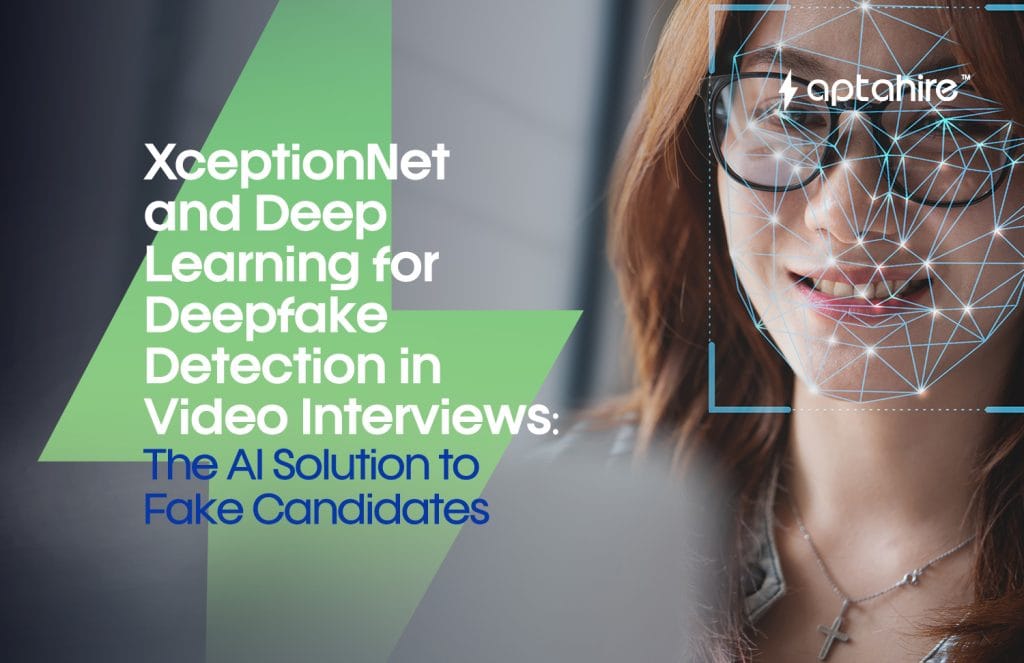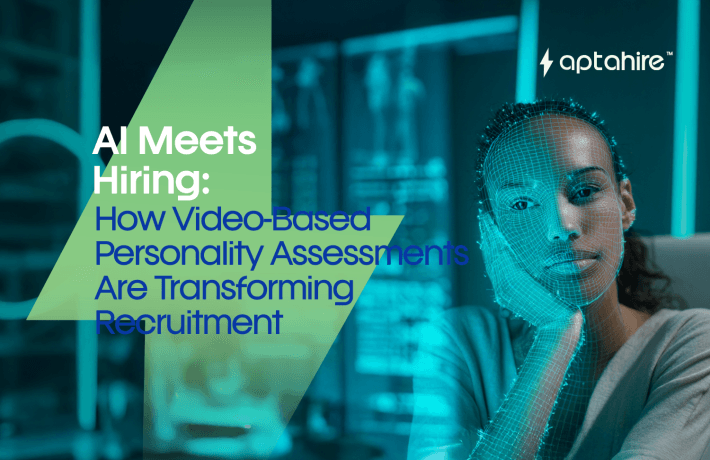XceptionNet and Deep Learning for Deepfake Detection in Video Interviews: The AI Solution to Fake Candidates

Introduction: When the Face You See Isn’t the Person You’re Hiring
Imagine sitting across from a candidate in a virtual interview. They’re confident, articulate, and have all the right answers. But here’s the twist, you’re not actually speaking to them. The face you see is a hyper-realistic deepfake, and the voice might be AI-generated too.
Scary? Absolutely.
Possible? More than ever.
In the age of remote hiring, this isn’t science fiction. Deepfake technology has advanced to the point where anyone with the right tools can impersonate someone else in real time. This poses a massive threat to hiring authenticity, company security, and even compliance regulations.
This is where XceptionNet, a specialized deep learning model, enters the scene, acting as a digital truth detector that can spot even the subtlest signs of manipulation.
Why Deepfakes Are a Growing Threat in Virtual Hiring
Before 2020, video interviews were just a convenient option. Post-pandemic, they became the default mode of interviewing for many companies. While this expanded hiring reach globally, it also gave fraudsters a new playground.
Here’s why deepfakes in interviews are dangerous:
- Identity theft – Someone could impersonate a skilled professional to get a job, only to hand over the access to another person after onboarding.
- Credential fraud – Candidates might fake their identity to pass background checks.
- Security breaches – If an imposter gains access to sensitive company data, the consequences can be catastrophic.
- Reputation damage – If news spreads that a company hired a fake candidate, it can erode trust among clients and employees.
Deepfake tech is evolving faster than most manual detection methods, which is why AI-powered solutions like XceptionNet are essential.
What is XceptionNet?
XceptionNet is a convolutional neural network (CNN) architecture designed for image classification and recognition, but it’s especially powerful in detecting image and video manipulation.
It works on the principle of depthwise separable convolutions, meaning it breaks down image processing into smaller, more efficient steps, allowing it to catch fine-grained inconsistencies that human eyes miss.
In deepfake detection, XceptionNet is often trained on large datasets of both real and fake faces (such as FaceForensics++) so it can:
- Identify pixel-level artifacts left by AI-generated face swaps.
- Detect unnatural facial movements, blinking patterns, and lighting inconsistencies.
- Spot compression errors that often appear in synthetic videos.
How Deep Learning Powers Detection
While XceptionNet is the architecture, deep learning is the engine that makes it effective. Here’s how it works in the context of video interview analysis:
- Frame Extraction – The video interview is broken down into individual frames.
- Feature Analysis – Each frame is processed to detect anomalies in facial structure, textures, and micro-expressions.
- Temporal Consistency Check – The AI checks if facial expressions and movements remain consistent over time.
- Probability Scoring – The system assigns a “realness score” to the video, flagging anything suspicious.
Deep learning models improve over time, meaning the more data they analyze, the better they get at identifying new deepfake techniques.
XceptionNet in Action for Video Interviews
Let’s break down how a hiring platform might use XceptionNet to stop fake candidates:
- Pre-Interview Identity Verification – Candidates upload a government ID and perform a short video verification sequence. XceptionNet checks if the face in the video matches the ID and isn’t manipulated.
- Live Interview Monitoring – During the interview, the AI works in real-time, flagging potential deepfake signs such as unnatural eye reflections or frame glitches.
- Post-Interview Analysis – A deep learning model reviews the recorded interview for deeper analysis, scoring the probability of manipulation.
This creates three layers of security; before, during, and after the interview, ensuring that a fake candidate has almost no chance of slipping through.
Case Study: Stopping a Deepfake Candidate Before They’re Hired
A leading tech company using an AI hiring platform integrated with XceptionNet flagged a suspicious candidate.
On the surface, everything looked normal. But during live monitoring, the AI detected subtle flickering around the jawline and an unusual blink rate, common signs of deepfake generation.
Further review revealed that the candidate was using an AI-generated face over a live video feed. The company prevented a fraudulent hire and potentially avoided giving access to sensitive R&D data.
Advantages of XceptionNet for Hiring Teams
- High accuracy in detecting manipulation artifacts.
- Real-time analysis to prevent wasting interviewer time.
- Continuous learning to stay ahead of evolving deepfake methods.
- Scalable for large-scale virtual hiring campaigns.
Limitations and Challenges
While powerful, XceptionNet isn’t flawless.
- False positives – Sometimes lighting or poor video quality can trigger alerts.
- Data privacy concerns – Storing and analyzing candidate videos must comply with data protection laws.
- Computation power – High accuracy detection can be resource-intensive.
This is why XceptionNet is often part of a multi-layer AI security strategy, combining biometric verification, voice analysis, and behavioral monitoring.
The Future: Even Smarter AI Detection
As deepfake tools get better, detection AI must keep pace. The future will likely see:
- Hybrid AI models combining XceptionNet with transformers for even better temporal analysis.
- Cross-modal detection using both video and voice AI analysis.
- Industry-wide databases of known deepfake patterns for faster detection.
Conclusion: Your Best Defense Against the Fake Face Problem
In the battle between deepfake creators and AI detectors, it’s an arms race, but with tools like XceptionNet and deep learning, hiring teams have a powerful shield.
For recruiters, it’s no longer enough to trust what you see on screen. A data-driven, AI-powered approach is now the only way to guarantee that the person you’re hiring is who they claim to be.
If deepfake technology is the wolf in sheep’s clothing, XceptionNet is the shepherd that never blinks
FAQs
1. What is XceptionNet, and why is it used for deepfake detection?
XceptionNet is a convolutional neural network (CNN) architecture that excels at identifying subtle inconsistencies in images and videos. It is highly effective for deepfake detection because it can learn fine-grained features, such as unnatural skin textures, blinking patterns, and pixel-level artifacts that are often invisible to the human eye.
2. How does deep learning help in detecting fake candidates during video interviews?
Deep learning models are trained on large datasets of both real and fake videos to recognize patterns unique to manipulated media. These models can spot inconsistencies in facial movements, lighting, and lip-syncing, which are common in deepfake-generated content.
3. Why are deepfakes a problem in recruitment?
Deepfakes can allow individuals to impersonate someone else or hide their real identity, posing risks such as identity theft, fraudulent qualifications, and even corporate espionage. In video interviews, this can lead to hiring unqualified or malicious candidates.
4. How accurate is XceptionNet in detecting deepfakes?
When trained on comprehensive datasets like FaceForensics++ or DeepFake Detection Challenge datasets, XceptionNet can achieve accuracy rates above 95%. However, performance depends on video quality, resolution, and whether the deepfake uses advanced evasion techniques.
5. Can deepfake detection work in real time during live interviews?
Yes. By integrating XceptionNet-based models with real-time processing tools, it’s possible to analyze incoming video frames during the interview. The system can flag suspicious behavior instantly, allowing recruiters to take immediate action.
6. What kind of data is needed to train a deepfake detection model?
The model requires large, diverse datasets containing both real and manipulated videos. These datasets should represent various ethnicities, lighting conditions, camera angles, and manipulation techniques to improve robustness.
7. Does this technology raise privacy concerns for candidates?
Ethical implementation is key. Recruiters must clearly inform candidates that AI tools are being used to detect deepfakes, comply with data protection laws, and ensure that no personal data is stored unnecessarily.
8. Can this system detect other forms of video manipulation besides deepfakes?
Yes. XceptionNet can also detect other forgeries such as face swaps, lip-sync alterations, replay attacks, and certain forms of CGI or morphing used to disguise identities.
9. How can companies integrate XceptionNet-based deepfake detection into their hiring process?
They can use API-based solutions or integrate the model directly into their video interview platforms. This ensures that every interview video undergoes automated authenticity verification before moving forward in the hiring process.
10. Will deepfake detection technology keep up with evolving AI-generated fakes?
While deepfake technology is improving rapidly, detection models are also advancing. Continuous retraining with new types of deepfakes, coupled with hybrid detection approaches (audio, behavioral, and biometric analysis), ensures the system stays ahead.



